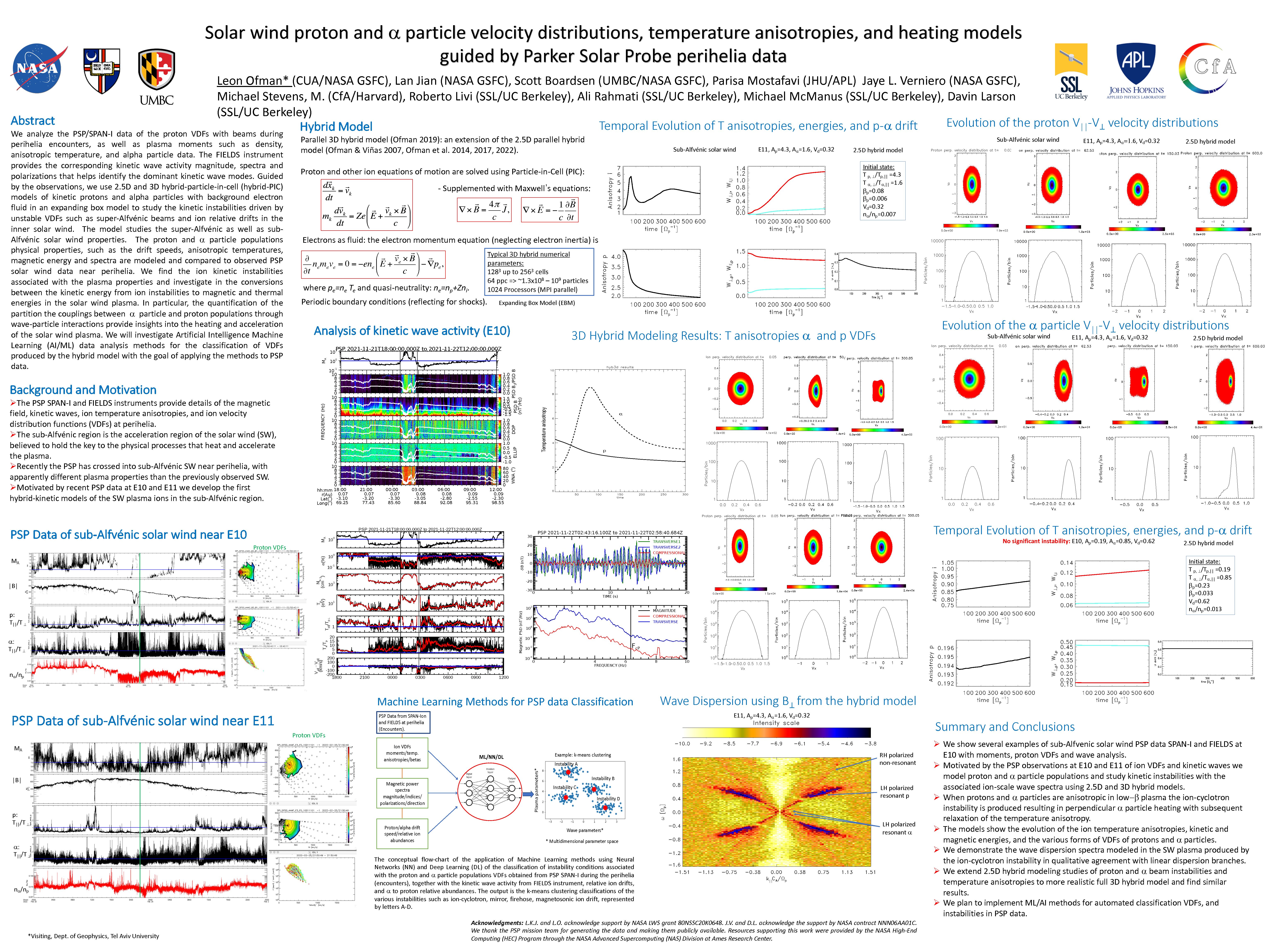Authors: Leon Ofman* (CUA/NASA GSFC), Lan Jian (NASA GSFC), Scott Boardsen (UMBC/NASA GSFC), Parisa Mostafavi (JHU/APL) Jaye L. Verniero (NASA GSFC), Michael Stevens, M. (CfA/Harvard), Roberto Livi (SSL/UC Berkeley), Ali Rahmati (SSL/UC Berkeley), Michael McManus (SSL/UC Berkeley), Davin Larson (SSL/UC Berkeley)
We will analyze the PSP/SPAN-I data of the proton VDFs with beams during perihelia encounters, as well as plasma moments such as density, anisotropic temperature, and alpha particle data. The FIELDS instrument provides the corresponding kinetic wave activity magnitude, spectra and polarizations that helps identify the dominant kinetic wave modes. Guided by the observations, we use 2.5D and 3D hybrid-particle-in-cell (hybrid-PIC) models of kinetic protons and alpha particles with background electron fluid in an expanding box model to study the kinetic instabilities driven by unstable VDFs such as super-Alfvenic beams and ion relative drifts in the inner solar wind. The model studies the super-Alfvenic as well as sub-Alfvenic solar wind properties. The proton and alpha particle populations physical properties, such as the drift speeds, anisotropic temperatures, magnetic energy and spectra are modeled and compared to observed PSP solar wind data near perihelia. We find the ion kinetic instabilities associated with the plasma properties, and investigate in the conversions between the kinetic energy from ion instabilities to magnetic and thermal energies in the solar wind plasma. In particular, the quantification of the partition the couplings between alpha particle and proton populations through wave-particle interactions provide insights into the heating and acceleration of the solar wind plasma. We will investigate Artificial Intelligence Machine Learning (AI/ML) data analysis methods for the classification of VDFs produced by the hybrid model with the goal of applying the methods to PSP data.


